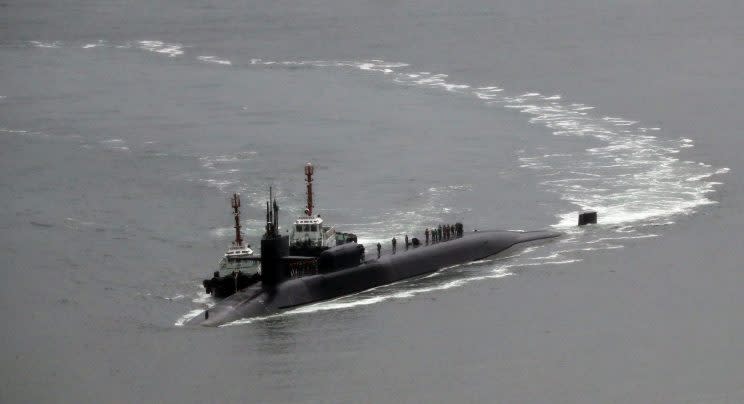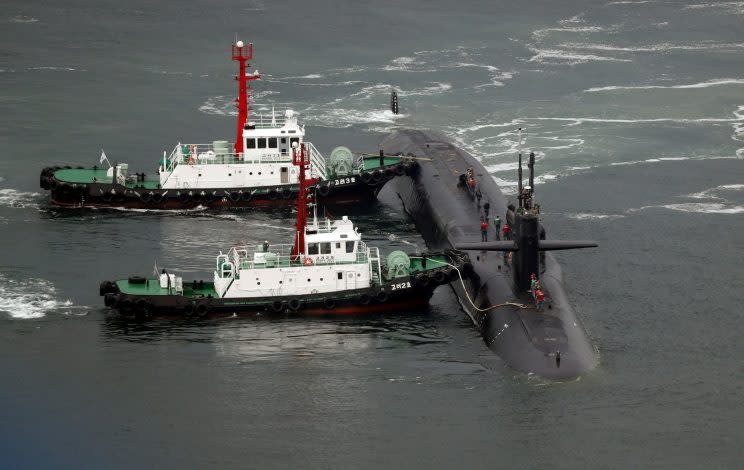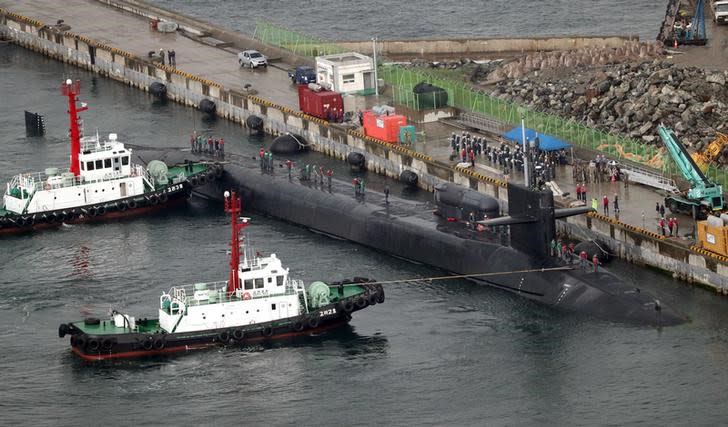US submarine arrives in South Korea as North carries out 'largest ever artillery drill'
A US submarine has arrived in South Korea as fears of North Korean nuclear test escalated, weeks after Donald Trump sent a warship to the Korean Peninsula.
USS Michigan, an Ohio-class nuclear-powered submarine, arrived at a naval base in Busan, and will join an incoming group of warships led by aircraft carrier Carl Vinson.

According to reports, North Korea has marked the 85th anniversary of its army by staging its largest-ever artillery firing drill to mark the occasion.

“There is no limit to the strike power of the People’s Army armed with our style of cutting-edge military equipment including various precision and miniaturised nuclear weapons and submarine-launched ballistic missiles,” the country’s stage-controlled Rodong Sinmun newspaper said in a front-page editorial.
The move comes following rising tensions between the US and North Korea, as each side up its rhetoric in recent weeks.
MORE: Donald Trump comment ‘may have sparked nuclear arms race’
MORE: Russia sends troops to North Korea border as tensions escalate
MORE: Kim Jong-un warns of ‘super-mighty preemptive strike’ against United States
Last week, US vice president Mike Pence declared that the “era of strategic patience is over” regarding North Korea’s desires to develop nuclear weapons.
“President Trump has made it clear that the patience of the United States and our allies in this region has run out and we want to see change,” he said.
“We want to see North Korea abandon its reckless path of the development of nuclear weapons, and also its continual use and testing of ballistic missiles is unacceptable.”

Days earlier, the North Korean regime, led by Kim Jong-un, defied Donald Trump‘s demands, launching missiles in a failed test.
“North Korea showing a variety of offensive missiles at yesterday’s military parade and daring to fire a ballistic missile today is a show of force that threatens the whole world,” South Korea’s foreign ministry said in a statement.
In an unconventional move, the entire US Senate has been asked to attend a briefing on North Korea on Wednesday at the White House.
“This is a real threat to the world, whether we want to talk about it or not,” Trump told the Security Council on Monday. “North Korea’s a big world problem, and it’s a problem we have to finally solve.
“People put blindfolds on for decades and now it’s time to solve the problem,” he said.
However, some commentators have argued that Trump has backed himself into a corner over North Korea. It is not clear how the US will react if North Korea continues to defy its demands.
“It’s been all about pressure and brinksmanship and military tools and tactics and chess something, and now to literally, directly taunt the leader of North Korea is like poking the hornet’s nest yet again,” Paul Carroll, program director at the Ploughshares Fund, a group working to eliminate nuclear weapons, told CNN.
“If you do this kind of ratcheting [up] of rhetorical tensions but also sending military hardware into the region, if you do that absent of any kind of offramp or door or window for the North Koreans to consider walking through and reengaging in any sort of discussions, bad things are going to happen,” he added.
After the US sent a warship to the region, Pyongyang reacted angrily, threatening to sink the aircraft carrier — warning of a “super-mighty preemptive strike” against the US.
China has urged for calm. President Xi Jinping urged all parties to “maintain restraint and avoid actions that would increase tensions”.

 Yahoo News
Yahoo News 


